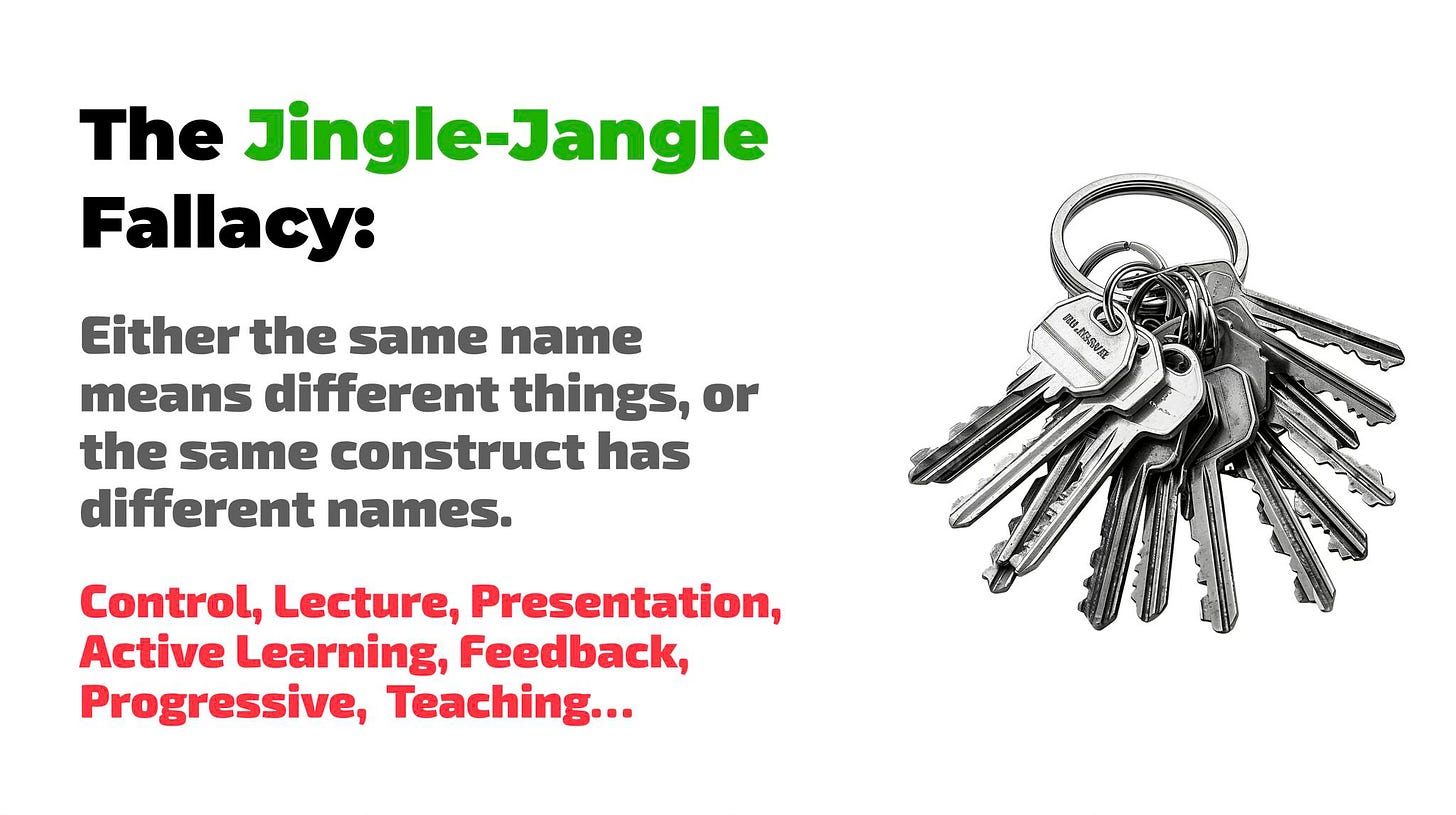As teachers, we often assume that we’re speaking the same language, but we are NOT. And this overlooked issue has lead to several misunderstandings and chaos in education.
The Jingle-Jangle Fallacy: it is when the same term means different things to different people or when different terms are used for the same concept.
The result? Confusion, misalignment, and competing priorities.
Consider something as foundational as "learning."
For a teacher, "learning" might mean mastering foundational knowledge and core skills.
For a school principal, it could mean meeting measurable outcomes. Parents may see it as moral development, while students might view learning as simply passing an exam.
Each group brings its own meaning to the table, and while all of these interpretations might sound valid, they push us in different directions.
Without shared/agreed definitions, we risk more chaos, fragmented efforts, and conflicting priorities in education.
And here’s another consequence: bad ideas take hold because they sound good.
When we don’t clarify our assumed definitions, catchy slogans (like "students should construct their own knowledge") replace evidence informed pedagogy.
The only way forward is to confront this issue head-on.
Within each institution, and especially among the teachers, we can start building shared definitions and common understanding that align with evidence and inform our teaching practices.
Establish shared definitions – like, what do we actually mean by “teaching” and “learning”? What is the meaning of student engagement? What does collaborative learning look like? What is an effective feedback?
Align pedagogy with those definitions – Teaching methods that match the learning process and outcomes we truly value, not just the ones we can easily measure.
Resist vague educational trends – If an idea sounds good but lacks clarity (e.g., “Let the students co-create knowledge!”), question it. Challenge any romantic fluffy idea. Clarify the process and outcome before implementing them.
Without these steps, education and teaching/learning will continue to be a battlefield of competing ideologies rather than an environment for deep learning.
(For further reading, I suggest reading Statis Theory. It helped me understand where or why we disagree and how we can come up with shared definitions.)




